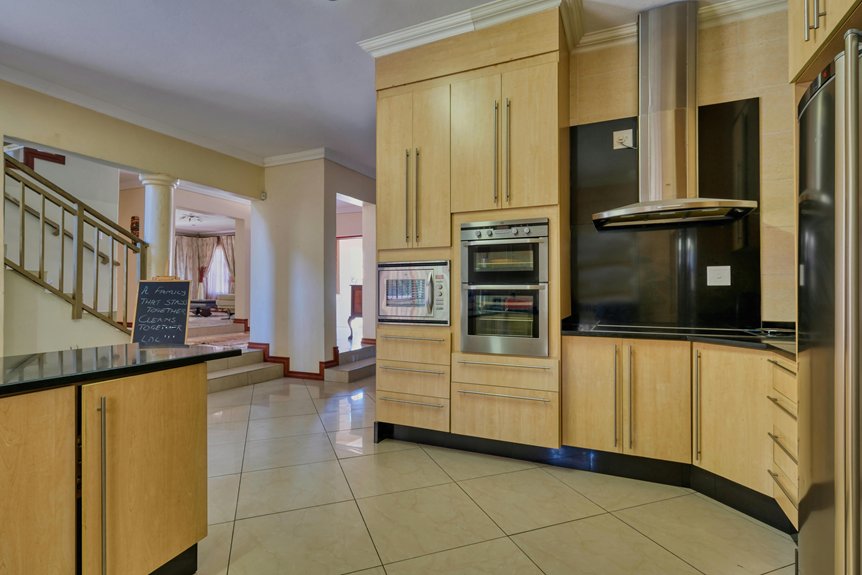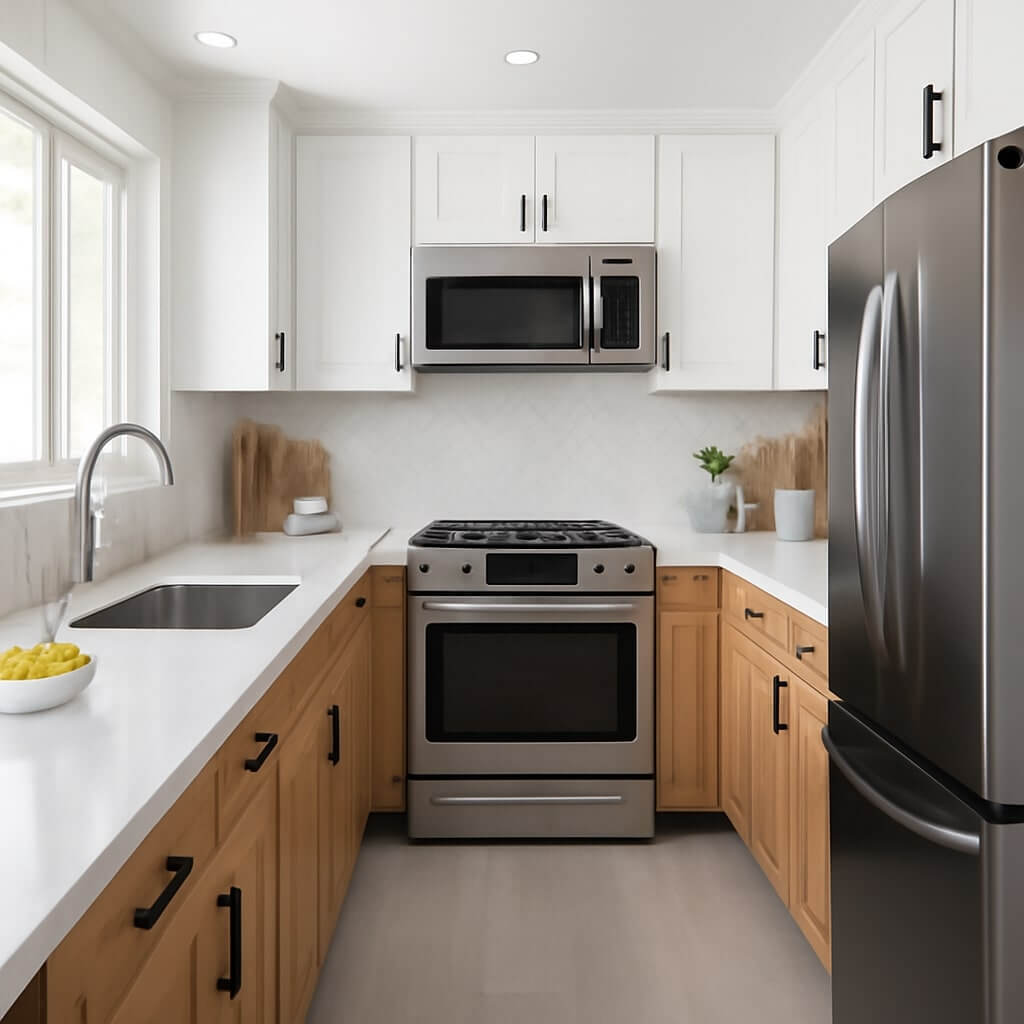When you’re planning a kitchen remodel in Portland, it’s essential to follow a structured approach. Start by defining your goals and setting a budget that reflects your vision. Researching local codes can save you from future headaches, while selecting a design style will guide your aesthetic choices. Each step builds on the last, leading to a kitchen that’s not only functional but also a true reflection of you. So, what comes next in this transformative journey?
Key Takeaways
- Define your kitchen goals and vision, focusing on aesthetics and functionality to guide the renovation process effectively.
- Set a realistic budget by evaluating finances, estimating costs, and prioritizing essential expenses to avoid overspending.
- Research local codes and regulations to ensure compliance with zoning laws and obtain any necessary building permits for your remodel.
- Choose a design style and plan the layout, maximizing functional space while ensuring it complements the overall home aesthetic.
- Incorporate personal touches and decorative accents to create a welcoming environment that reflects your style and fosters a sense of home.
Define Your Goals and Vision
When you begin a kitchen remodel, defining your goals and vision is essential to the process, as it sets the foundation for every decision that follows.
Consider your kitchen aesthetics—do you envision a sleek modern look or a cozy rustic vibe? Identify your renovation priorities, like maximizing storage or enhancing functionality.
Define your kitchen’s aesthetics and renovation priorities to create a space that perfectly reflects your vision and needs.
Make a list of must-haves versus nice-to-haves, ensuring your vision remains clear throughout the project. Visualize your dream space by gathering inspiration from magazines or online platforms.
This focused approach not only streamlines your choices but also keeps you motivated, making your dream kitchen a reality sooner than you think.
Set a Realistic Budget
As you immerse yourself in your kitchen remodel, setting a realistic budget is essential to keeping your project on track and stress-free. Start by evaluating your finances and defining priorities. Here are some budgeting tips and cost-saving strategies to help you along the way:
| Expense Category | Estimated Cost |
|---|---|
| Cabinets | $5,000 – $15,000 |
| Countertops | $2,000 – $5,000 |
| Appliances | $3,000 – $10,000 |
| Flooring | $1,500 – $4,000 |
| Labor | $2,000 – $8,000 |
Research Local Codes and Regulations
Before diving into your kitchen remodel, it’s important to familiarize yourself with local codes and regulations, since these guidelines can greatly impact your design and construction process.
Start by researching zoning laws in your area; they dictate what you can and can’t do with your space.
Don’t forget about building permits, as they’re vital for ensuring your project complies with safety standards. Ignoring these requirements can lead to costly delays or even fines.
Choose Your Design Style
Choosing your design style is a pivotal step in your kitchen remodel, especially since it sets the tone for the entire space.
Think about the blend of modern aesthetics and traditional influences that resonate with you. Do you envision sleek lines and minimalistic features, or do you prefer the warm, inviting charm of classic cabinetry?
Consider how colors, materials, and finishes will reflect your personality and lifestyle. Whether you lean towards a contemporary vibe or a more timeless look, guarantee your design style harmonizes with the rest of your home, creating a cohesive environment that feels uniquely yours.
Plan the Layout
When planning your kitchen layout, think about how to maximize functional space while maintaining a smooth traffic flow.
You want to create an environment where cooking feels effortless and guests can mingle without bumping into one another.
Consider the work triangle and key zones, ensuring everything you need is within reach and easily accessible.
Maximize Functional Space
To truly maximize functional space in your kitchen remodel, envision how you’ll use the area daily.
Think about integrating storage solutions that cleverly utilize vertical space, like shelves or cabinets that reach the ceiling. Consider multi-functional furniture, such as an island with built-in storage or a dining table that doubles as a workspace.
Each element should serve a purpose while enhancing the overall aesthetic. By thoughtfully planning your layout, you can create a seamless flow that makes cooking, dining, and entertaining effortless.
Prioritize practicality, and you’ll find that every inch of your kitchen becomes a valuable part of your home.
Consider Traffic Flow
As you plan your kitchen layout, considering traffic flow is essential for creating an inviting and functional space. You want smooth kitchen flow and easy movement between work zones. Think about common traffic patterns and how they interact with your design.
| Area | Importance |
|---|---|
| Cooking Zone | High – frequent movement |
| Dining Area | Moderate – social space |
| Entry Points | Critical – avoid congestion |
Select Materials and Fixtures
Choosing the right materials and fixtures is essential for transforming your kitchen into a functional and stylish space.
Prioritize material durability, as high-quality surfaces withstand daily wear and tear while maintaining their charm. Consider quartz countertops for elegance and resilience, or hardwood floors for warmth and character.
When it comes to fixture aesthetics, think about how your faucets, lighting, and cabinet hardware can complement your overall design. Sleek, modern fixtures can elevate a contemporary look, while vintage options add a touch of nostalgia.
Hire a Reliable Contractor
Finding a reliable contractor is crucial for guaranteeing your kitchen remodel goes smoothly and meets your expectations. Evaluate contractor qualifications carefully—check their licenses, insurance, and experience. Clear contractor communication is important; you want someone who listens and addresses your concerns promptly.
Here’s a quick comparison to help you choose wisely:
| Criteria | Importance |
|---|---|
| Qualifications | Guarantees quality work |
| Communication Skills | Prevents misunderstandings |
| Experience | Enhances project efficiency |
Prepare for Demolition
Once you’ve secured a reliable contractor, it’s time to gear up for the demolition phase of your kitchen remodel.
Begin by establishing a clear demolition timeline to keep things on track. You’ll want to remove all personal items and furniture from the space.
Safety precautions are essential—ensure your contractor provides protective gear like goggles and masks for everyone involved.
It’s also wise to notify your neighbors about potential noise and dust.
Oversee the Construction Process
As the construction kicks off, you’ll want to keep a close eye on the progress to guarantee everything aligns with your vision.
Regular check-ins with your contractors can help clarify any questions and keep the project on track. Staying engaged not only fosters a smooth workflow but also allows you to address any issues before they snowball.
Monitor Progress Regularly
Monitoring progress regularly during your kitchen remodel is essential to ensuring everything runs smoothly. By engaging in progress tracking and seeking regular updates, you can catch issues early and keep your vision intact. Here’s a simple way to visualize your progress:
| Stage | Status |
|---|---|
| Demolition | Completed |
| Framing | In Progress |
| Electrical Work | Pending |
Keep your eyes on the details and maintain open lines of communication with your team. This diligence not only enhances your remodel experience but also guarantees that your dream kitchen comes to life as you envisioned.
Communicate With Contractors
How can you guarantee your kitchen remodel stays on track and aligns with your vision? Effective contractor communication is key.
Here are three ways to confirm smooth project updates and collaboration:
- Schedule Regular Check-ins: Set weekly meetings to discuss progress and address concerns.
- Use Visual Aids: Share inspiration boards or design sketches to clarify your ideas.
- Create a Communication Channel: Utilize apps or group chats for instant updates and easy feedback.
Add Finishing Touches and Personalization
While you’ve meticulously planned and executed your kitchen remodel, the finishing touches and personalization are what truly transform the space into your own.
Start by incorporating personal touches that reflect your style—consider family photos, artwork, or heirloom pieces displayed on open shelves. Add decorative accents like vibrant dishware, chic canisters, or a statement rug to create warmth.
Don’t forget about lighting; unique fixtures can elevate the ambiance considerably.
Finally, choose the right plants or herbs to breathe life into your kitchen. These thoughtful details won’t only enhance your kitchen’s aesthetic but also make it a welcoming environment for family and friends.
Conclusion
In the end, your Portland kitchen remodel is all about blending functionality with your unique style. By following these ten essential steps, you’ll not only create a space that meets your needs but also reflects who you are. Embrace the transformation, and don’t shy away from adding those personal touches that make it truly yours. With careful planning and a bit of creativity, your dream kitchen is just around the corner, waiting to inspire culinary adventures.




